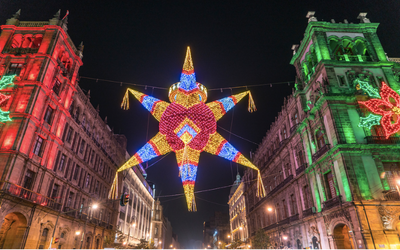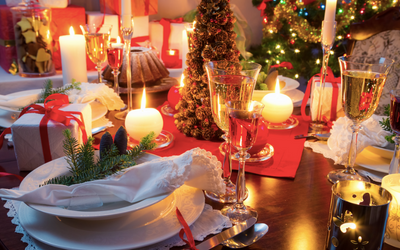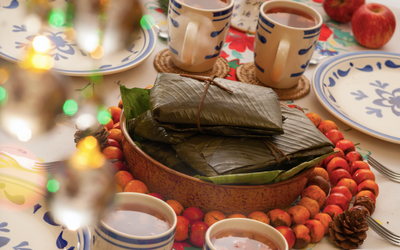
W E L C O M E
DESTINATION MEXICO
A premier Destination Management Company in Mexico since 1988
Our Offices: Mexico City, Puerto Vallarta, Cancun & Los Cabos
Email: info@destination-mexico.com

W E L C O M E
DESTINATION MEXICO
A premier Destination Management Company in Mexico since 1988
Our Offices: Mexico City, Puerto Vallarta, Cancun & Los Cabos
Email: info@destination-mexico.com
NEWS
MERRY MEXICAN CHRISTMAS!
Just as it is in many parts of the world, Christmas in Mexico is a special and truly magical time of the year. It is a time for reflection, renewal, sharing, and of course for coming together with our loved ones and our communities. Even though Mexico has adopted a lot of the popular Christmas traditions and imagery known around the world, it also has strong traditions of its own that make Christmas time an ideal time to learn more about Mexican culture.
Did you know that the Mexican Christmas season extends from the 12th of December (beginning with the Catholic celebration of the Feast of the Virgin of Guadalupe) all the way to the 2nd of February, when Candlemas is celebrated? Here are just a few of the notable events that we celebrate along the way:From the 16th to the 24th of December, communities all around the country gather to hold parties and processions known as “Posadas” (the Spanish word for an inn). Posadas generally begin with a procession, heading from a local church towards a house. Traditionally, a girl and a boy are chosen to play the role of Mary and Joseph, and the rest of the procession follows them carrying candles, paper lanterns, and other decorations. Once the procession arrives at the house, the group usually divides in two — one group remains outside and sings a traditional song recounting how Mary and Joseph called at the inn to seek shelter, while the other group goes inside the house and sings a response. The ritual ends with the second group welcoming the first inside, and the celebrations can begin!
First up is the traditional piñata, a favorite among Mexican children! While birthday piñatas come in all shapes and sizes, the piñatas broken at Posadas are usually star-shaped. Once the piñata has been cracked open and all the candy and treats have been scooped up by eager children, the meal can begin. Typical dishes served at these parties include tamales (steamed maza dumplings wrapped in corn husk or banana leaf), atole (a hot, corn-based beverage), buñuelos (a sweet fried dough fritter), and a traditional punch that is made from seasonal fruits like tejocote, guava, plum, orange, or prunes, sweetened with piloncillo (a kind of brown sugar), and spiced with cinnamon or vanilla (grown-ups may add a dash of tequila or rum!).
The last posada is held early on Christmas Eve, which is also when most Mexicans hold their big Christmas dinner. Traditional dishes include bacalao (reconstituted dried cod cooked with onions, tomato sauce, olives, and more), romeritos (sprigs of a green vegetable found in Mexico, known in English as seepweed, cooked in mole sauce along with dried shrimp), and turkey. Christmas presents are usually opened late on Christmas Eve, and Christmas day is spent recuperating from the previous night’s festivities, relaxing with one’s family and enjoying the “recalentado” (reheated leftovers from Christmas Eve dinner).
Beware! Between Christmas Day and New Year’s Eve, there is a day during which you should be very wary of what people say — this the 28th of December, Día de los Santos Inocentes (Sainted Innocents Day), the Mexican version of April Fool’s Day!
After the New Year celebrations, the next traditional celebration is the Three Kings’ Day, which comes on the 6th of January. Commemorating the three wise men who arrived to visit the newborn Jesus bearing gifts, this celebration begins the night before, when children leave a shoe by the doorway through which the Wise Men will enter bearing their gifts. After opening their presents on the 6th, everyone gathers to eat a round sweet bread known as “rosca” (ring), which is baked with dried fruit and sugar. Baked inside this bread are little images or plastic dolls of the infant Jesus, and whoever finds one of them in their slice must pay for everyone’s tamales on Candlemas, a celebration on the 2nd of February that marks both the presentation of the infant Jesus to the temple and the official end to the Christmas season!






